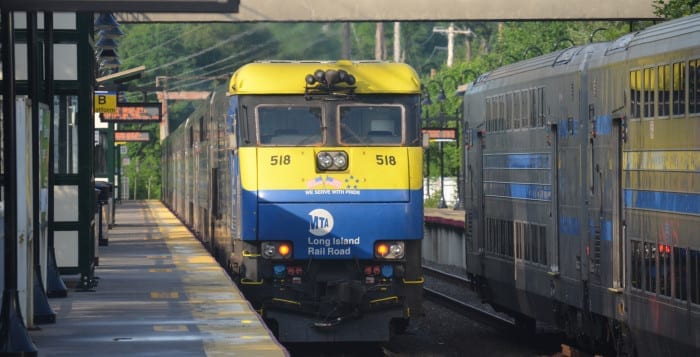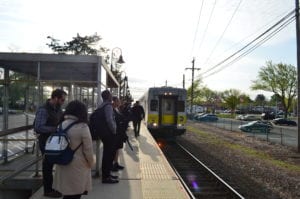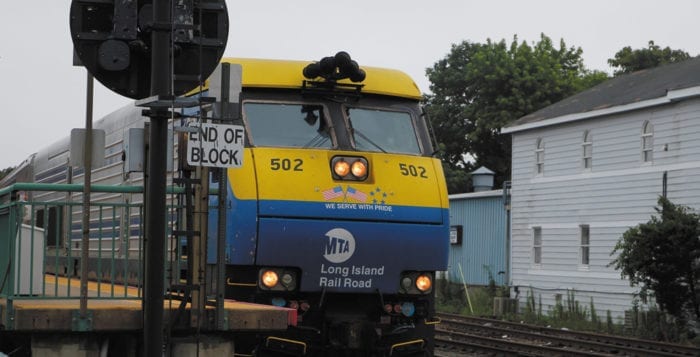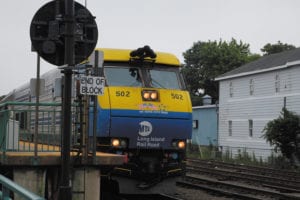By Daniel Dunaief
The development of steel highways beginning in the early 1800s has had an enormous impact on our society, especially on Long Island, where the Long Island Rail Road was chartered in 1834. To commemorate the 185-year history of trains in Suffolk and Nassau counties, the Port Jefferson Village Center will host a new exhibit titled Railroads: Tracking the History on Long Island from Sept. 5 to Oct. 30.
Sponsored by the Port Jefferson Harbor Education and Arts Conservancy and the Incorporated Village of Port Jefferson, the unique show perfectly captures generations of railroad history with unique photos of trains, tracks and commuters from the Village of Port Jefferson archives, the Long Island Railroad Museum and the Queens Public Library’s Digital Collection.
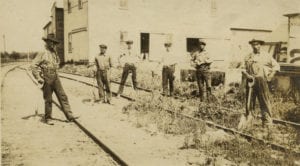
In addition to the numerous images, the exhibit, which was curated by Port Jefferson village historian Chris Ryon, will also feature artifacts and a 50-foot time line, starting in 1834, that shows the history of a railroad that is the oldest in the country operating under its original name and with its original charter.
Currently, the train system carries over 350,000 commuters back and forth around the area each day, ranking it first among railroads in shuttling commuters.
According to Don Fisher, the president of the Railroad Museum of Long Island, laborers came from numerous countries to build the railroad. Initially, many of the workers were English and German, said Fisher. As more immigrants arrived, the workers included people of Italian and Irish descent as well as African Americans.
The railroad was originally designed to help people travel from New York to Boston. The trains brought people to Orient Point, where they took the ferry to Connecticut, which was harder to cross because many of its rivers didn’t have bridges.
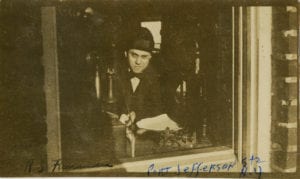
One of the featured artifacts is a huge lantern that has its own serendipitous story. A resident of Wading River donated the lantern three years ago to the railroad museum. Initially, the railroad experts at the museum weren’t sure where it came from or how old it was. Later, they received a call from a resident of Toms River, New Jersey, who had a picture of a steam engine from the late 1800s. The picture features a kerosene, whale oil-burning lantern that looked incredibly similar to the one donated.
“While this is not the exact same lantern, it likely came off a locomotive like this, so we could make the story come to life,” said Fisher who suggested that the LIRR is “our railroad, which we love to hate.”
While he thinks typical commuters who ride the trains each day may not be as drawn to the exhibit, Fisher expects families with young children enthralled by Thomas the Tank Engine or by stories and photos of railroads may find numerous train treasures at the upcoming exhibit. He also expects that some senior residents will come and reminisce about everything from the horror of a snowstorm to a ride aboard a steamy train without air conditioning on a hot day to stories about friends they met aboard the train.
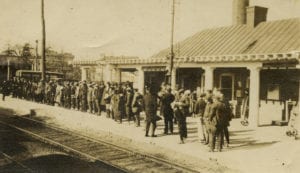
“The history of the Long Island Rail Road is the history of Long Island,” said Stephen Quigley, president of the Long Island Sunrise Trail Chapter of the National Railway Historical Society, who added that one of the many noteworthy railroad riders includes President Theodore Roosevelt who frequently took the LIRR to Oyster Bay while in office.
Quigley said he plans on contributing memorabilia to the exhibit, including a Dashing Dan logo, which is a popular feature from the 1950s trains. The typical Dashing Dan logo featured a commuter running with a briefcase, with half of his striped tie flying behind his head, as he’s checking his watch. The tagline on the logo was: The Route of the Dashing Commuter, which appeared above an LIRR placard.
The exhibit will also include numerous other versions of the Dashing Dan family, including a Dashing Sportsman, a Dashing Dottie and a Dashing Dan Weekend Chief, which features a commuter heading out aboard the train on the way to the beach.
Fisher and Quigley each have numerous stories about the history of the railroad and of their time aboard the trains.
In more modern times, Fisher said the Oakdale Station has featured at least two weddings. The LIRR has also been the setting for movies. The Mark Wahlberg film “Broken City,” which also stars Russell Crowe and Catherine Zeta-Jones, included scenes filmed aboard a train going back and forth from Long Island City to Montauk. During the filming, the LIRR added two extra cars, Fisher said.
Quigley recalled how one commuter, who had become friends with several other riders during his trek back and forth from Babylon to Mineola, had a baby shower on board the train.
Fisher added that many people are aware of some of the stories related to the Transcontinental Railroad, which involved moving Native Americans and gerrymandering properties. What people don’t often know, however, is that the “shenanigans with Congress and political bodies, the payoffs to get property so the railroad could be built, the sweetheart deals with companies, all happened here [on Long Island] first.”
Railroads, Fisher said, were the “dot.com of the time. Anybody with a few bucks wanted to invest. It was a hot commodity. More people worked for the railroad than any other industry. It was an economic generator.”
The community is invited to an opening reception of the new exhibit on Thursday, Sept. 12 from 6 to 9 p.m. Ryon said he hopes to have a panel discussion featuring railroad experts at the reception and is in the process of reaching out to a number of train executives.
The Port Jefferson Village Center, located at 101A East Broadway in Port Jefferson, is open seven days a week, except holidays, from 9 a.m. to 8 p.m.. For more information, call 631-802-2160.
Photos from the Kenneth Brady Collection


